When I received an inquiry about tracking down and photographing a few works of stained glass art that remained in a Brooklyn church, my heart skipped a beat. A project I'd always been passionate about - preserving architectural artistry and history- coming to my inbox through a client commission. Little did I know what work was ahead, or even if the stained glass art still existed.
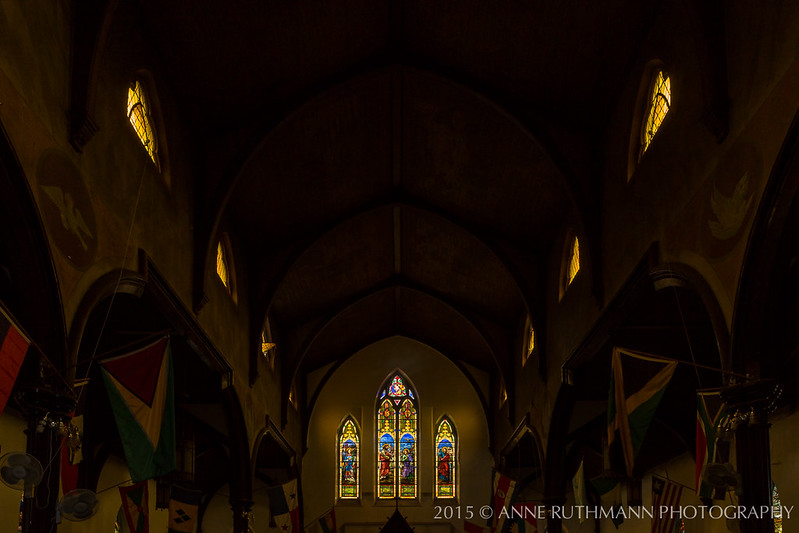
I've always loved churches with big sanctuaries. The atrium-like spaciousness of the high ceiling, the echo of the chamber that allows songs and chords to last a little longer, and the peaceful quality that people bring as they enter in humility, grace, gratitude, and gathering. The sanctuary often built in stone as a symbol of safety and stability, but with delicate stained glass to bring in ethereal light.
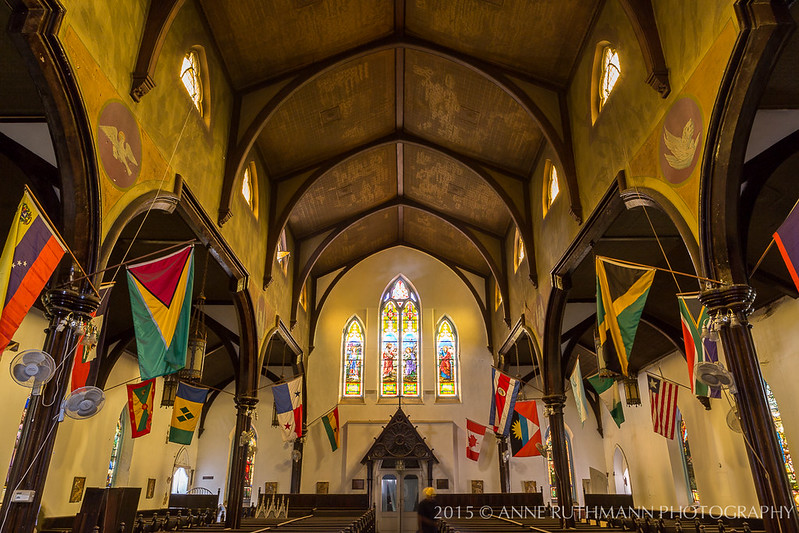
In recent years, it seems like there's an increased frequency of these vast sanctuaries going into disrepair, many without enough congregational tithes to keep them maintained or even occupied. So many beautifully crafted buildings, adorned with donated artifacts and artistry, but difficult to maintain on volunteer efforts. What will become of them all?

In the case of Church of the Redeemer, it will be torn down to become a mixed use building set on prime retail and residential real estate with the subway below, the neighborhood behind, and more shopping across the street. But what will happen to the artifacts? The Midmer/Gunzelman pipe organ, the stained glass windows, the wooden doors and pews?

For one stained glass artist, Jessie Van Brunt, who signed her own work before donating to the church, there is still hope that her works will be recovered and preserved. Though Jessie died in 1947, one of her surviving relatives, Karen, has been on a mission to recover as many of her art works as possible and got in touch with me to help. This hunt has led Karen to inquire about churches in places like Alaska and London, only to find that the churches have already been destroyed by fire or war, leaving little hope that Jessie's work would remain in a decommissioned church.
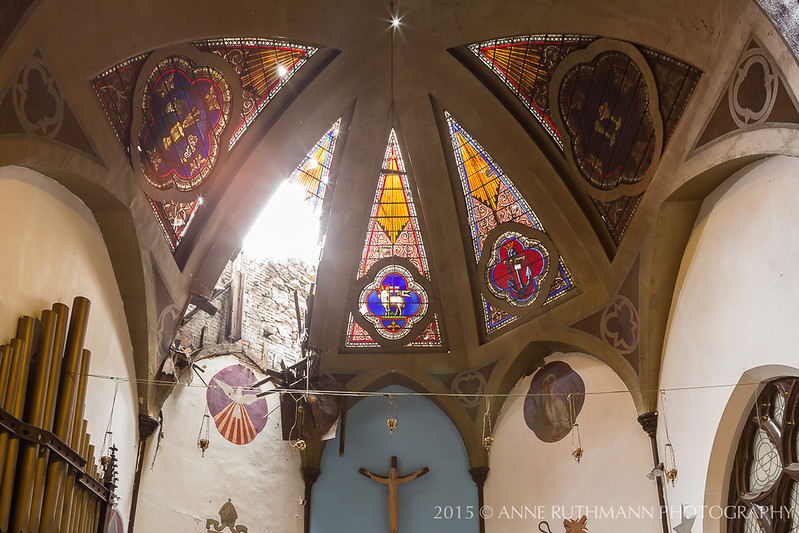
Even though the historic building was sold in 2012, I found it still standing on the corner of Pacific Ave & 4th Ave, giving direct reference to the subway tiles immediately below when I first arrived in April 2015. Hardly any scaffolding had been put up yet and it seemed as though many of the original windows were still in tact. It amazed me that this church hadn't been landmarked with such an iconic presence and location, but for whatever reason, this 1866 bluestone building never made it through the process.
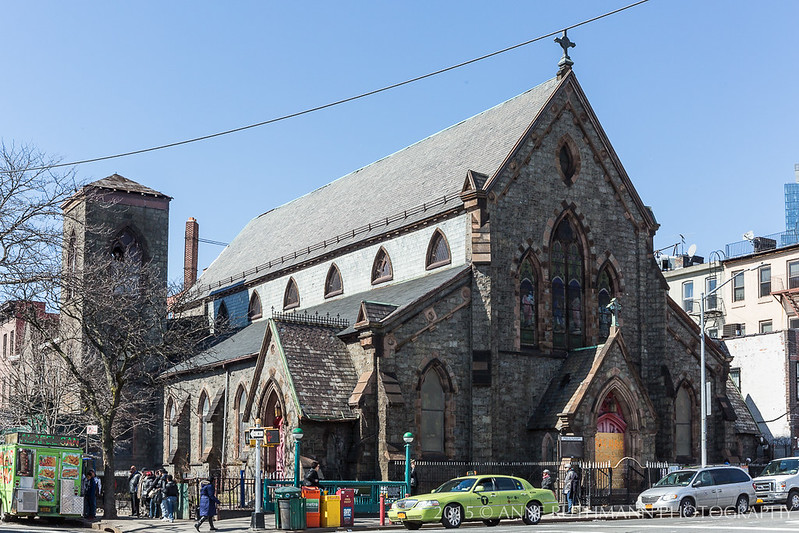
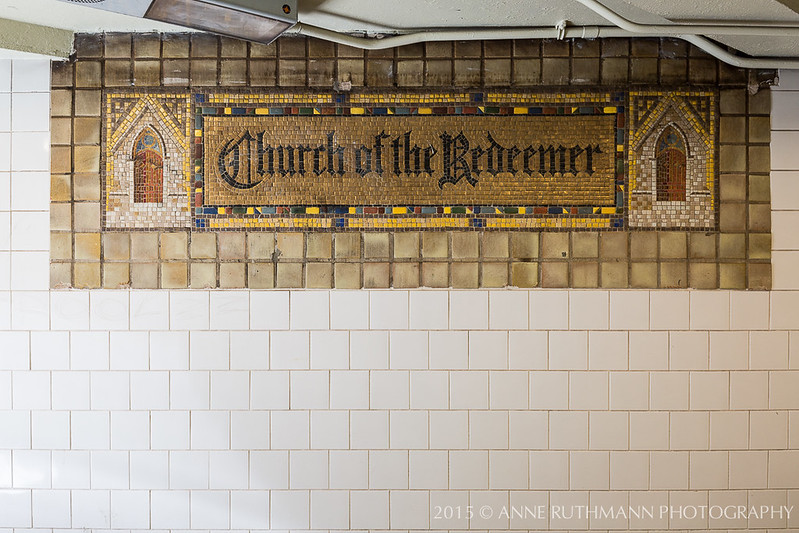
I compared historic Smithsonian Archive photographs to see if I could first identify if the windows were still there. While the windows were mostly covered from the outside, a few of the window shapes appeared to be similar enough, so I grabbed whatever reference photos I could get on my first visit in order to zoom in later and get a closer view for comparison.

Many of the windows on the building had similar shapes and similar visual themes, so it was only through getting as much detail as possible from all of the photographic records I could obtain on site and comparing them to the Smithsonian archives that allowed me to determine that yes, Jessie Van Brunt's stained glass windows were still in the church and still in an acceptable condition to photograph and to potentially remove for preservation. However, gaining access to the interior proved to be an entirely different challenge that would take months to unfold, as the developer wasn't interested in providing access to the building.
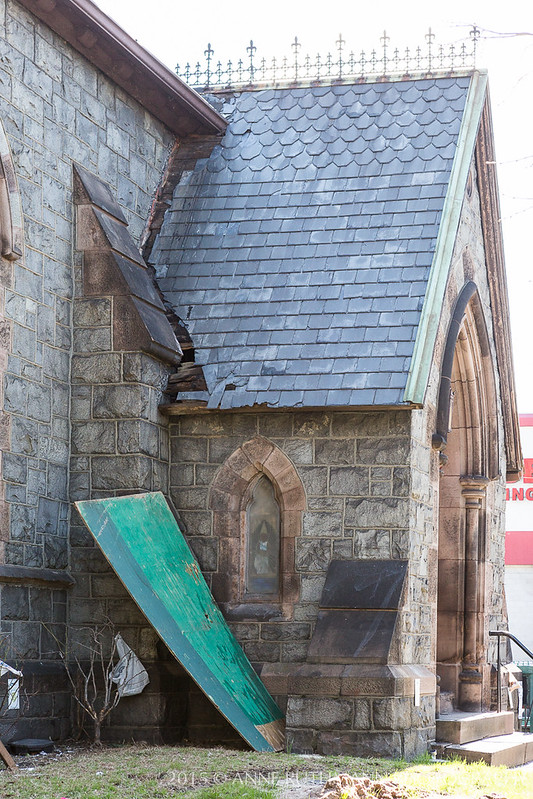

A tip from the Brooklyn Historical Society helped me learn that The Demolition Depot was able to make arrangements with the developer to remove many of the artifacts that the community was concerned would be destroyed in the processing of tearing the building down. Several of the items that I had been sent to photograph had already been removed from the building, but the windows that I could identify from the exterior of the building remained. The challenge was then to create as much of a detailed archival record of the stained glass window as possible, so that if it suffered any damage during removal, it could be pieced together exactly as it has been created. Unfortunately, one window was now completely obscured by construction scaffolding on the front of the building, which did not exist when I first requested access back in April. Instead of focusing on obtaining the best color from the light no longer available through the covered window, I turned my focused to the texture and construction of the stained glass. I also chose to provide enough context around the window in order to demonstrate its architectural placement and the space that had been carved for it in the building, which would be lost once the building was gone.
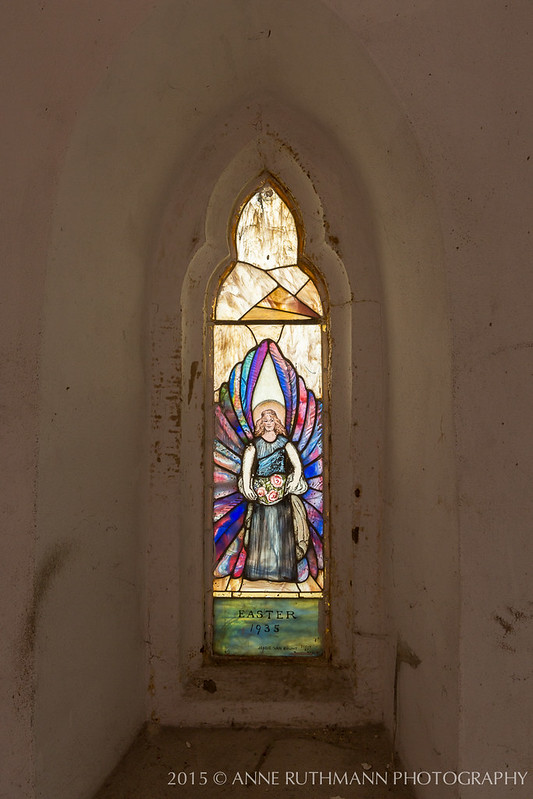
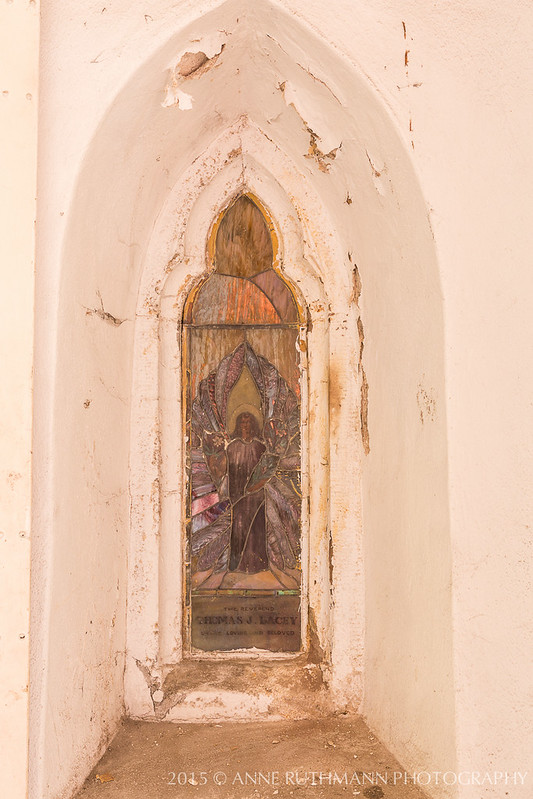
This church sat empty for 3 years before an architectural salvager was allowed access to remove the artifacts for preservation. If access had been granted sooner, less damage would have been done and more materials could have been recycled or preserved before they were rusted, warped, or broken. Some other decommissioned churches I've seen have been in much worse condition than this after just one year. The damage is almost always a result of a leaking roof or broken windows that could easily be repaired with small fixes accomplished during regular observation. The neglect and failure to act on minor problems until they become large problems are what create the most damage.
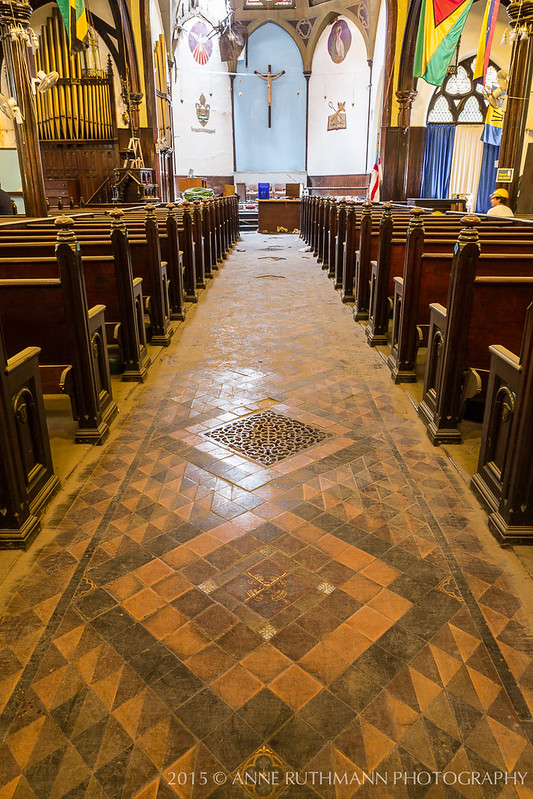
One of my hopes is that by sharing this story and these images, any future churches seeking to be decommissioned or sold will give time for family members, their congregation, and any historic groups an opportunity to find ways of preserving what is meaningful. Quite a bit of the labor and artistry put into churches was done on a volunteer basis, or as a gift of gratitude. It seems the least we can do is to give the craftsmanship of these artisans some consideration and opportunity to be saved, even if the structure itself cannot remain.

I'm grateful that I was given the chance to preserve what is left in imagery. Even if further damage is done or if the artifacts end up in a private collection, what has been preserved in images now can be remembered and shared in clarity and colorful detail. To see more images from my documentation of the Church of the Redeemer, visit:
Church of the Redeemer - Brooklyn, NY - 2015

I've always loved churches with big sanctuaries. The atrium-like spaciousness of the high ceiling, the echo of the chamber that allows songs and chords to last a little longer, and the peaceful quality that people bring as they enter in humility, grace, gratitude, and gathering. The sanctuary often built in stone as a symbol of safety and stability, but with delicate stained glass to bring in ethereal light.

In recent years, it seems like there's an increased frequency of these vast sanctuaries going into disrepair, many without enough congregational tithes to keep them maintained or even occupied. So many beautifully crafted buildings, adorned with donated artifacts and artistry, but difficult to maintain on volunteer efforts. What will become of them all?

In the case of Church of the Redeemer, it will be torn down to become a mixed use building set on prime retail and residential real estate with the subway below, the neighborhood behind, and more shopping across the street. But what will happen to the artifacts? The Midmer/Gunzelman pipe organ, the stained glass windows, the wooden doors and pews?

For one stained glass artist, Jessie Van Brunt, who signed her own work before donating to the church, there is still hope that her works will be recovered and preserved. Though Jessie died in 1947, one of her surviving relatives, Karen, has been on a mission to recover as many of her art works as possible and got in touch with me to help. This hunt has led Karen to inquire about churches in places like Alaska and London, only to find that the churches have already been destroyed by fire or war, leaving little hope that Jessie's work would remain in a decommissioned church.

Even though the historic building was sold in 2012, I found it still standing on the corner of Pacific Ave & 4th Ave, giving direct reference to the subway tiles immediately below when I first arrived in April 2015. Hardly any scaffolding had been put up yet and it seemed as though many of the original windows were still in tact. It amazed me that this church hadn't been landmarked with such an iconic presence and location, but for whatever reason, this 1866 bluestone building never made it through the process.


I compared historic Smithsonian Archive photographs to see if I could first identify if the windows were still there. While the windows were mostly covered from the outside, a few of the window shapes appeared to be similar enough, so I grabbed whatever reference photos I could get on my first visit in order to zoom in later and get a closer view for comparison.

Many of the windows on the building had similar shapes and similar visual themes, so it was only through getting as much detail as possible from all of the photographic records I could obtain on site and comparing them to the Smithsonian archives that allowed me to determine that yes, Jessie Van Brunt's stained glass windows were still in the church and still in an acceptable condition to photograph and to potentially remove for preservation. However, gaining access to the interior proved to be an entirely different challenge that would take months to unfold, as the developer wasn't interested in providing access to the building.


A tip from the Brooklyn Historical Society helped me learn that The Demolition Depot was able to make arrangements with the developer to remove many of the artifacts that the community was concerned would be destroyed in the processing of tearing the building down. Several of the items that I had been sent to photograph had already been removed from the building, but the windows that I could identify from the exterior of the building remained. The challenge was then to create as much of a detailed archival record of the stained glass window as possible, so that if it suffered any damage during removal, it could be pieced together exactly as it has been created. Unfortunately, one window was now completely obscured by construction scaffolding on the front of the building, which did not exist when I first requested access back in April. Instead of focusing on obtaining the best color from the light no longer available through the covered window, I turned my focused to the texture and construction of the stained glass. I also chose to provide enough context around the window in order to demonstrate its architectural placement and the space that had been carved for it in the building, which would be lost once the building was gone.


This church sat empty for 3 years before an architectural salvager was allowed access to remove the artifacts for preservation. If access had been granted sooner, less damage would have been done and more materials could have been recycled or preserved before they were rusted, warped, or broken. Some other decommissioned churches I've seen have been in much worse condition than this after just one year. The damage is almost always a result of a leaking roof or broken windows that could easily be repaired with small fixes accomplished during regular observation. The neglect and failure to act on minor problems until they become large problems are what create the most damage.

One of my hopes is that by sharing this story and these images, any future churches seeking to be decommissioned or sold will give time for family members, their congregation, and any historic groups an opportunity to find ways of preserving what is meaningful. Quite a bit of the labor and artistry put into churches was done on a volunteer basis, or as a gift of gratitude. It seems the least we can do is to give the craftsmanship of these artisans some consideration and opportunity to be saved, even if the structure itself cannot remain.

I'm grateful that I was given the chance to preserve what is left in imagery. Even if further damage is done or if the artifacts end up in a private collection, what has been preserved in images now can be remembered and shared in clarity and colorful detail. To see more images from my documentation of the Church of the Redeemer, visit:
Church of the Redeemer - Brooklyn, NY - 2015


